Scraping the biggest rental bike provider
How I reverse engineered the Nextbike app, scraped their API and built a tool to visualize bike movement across Europe
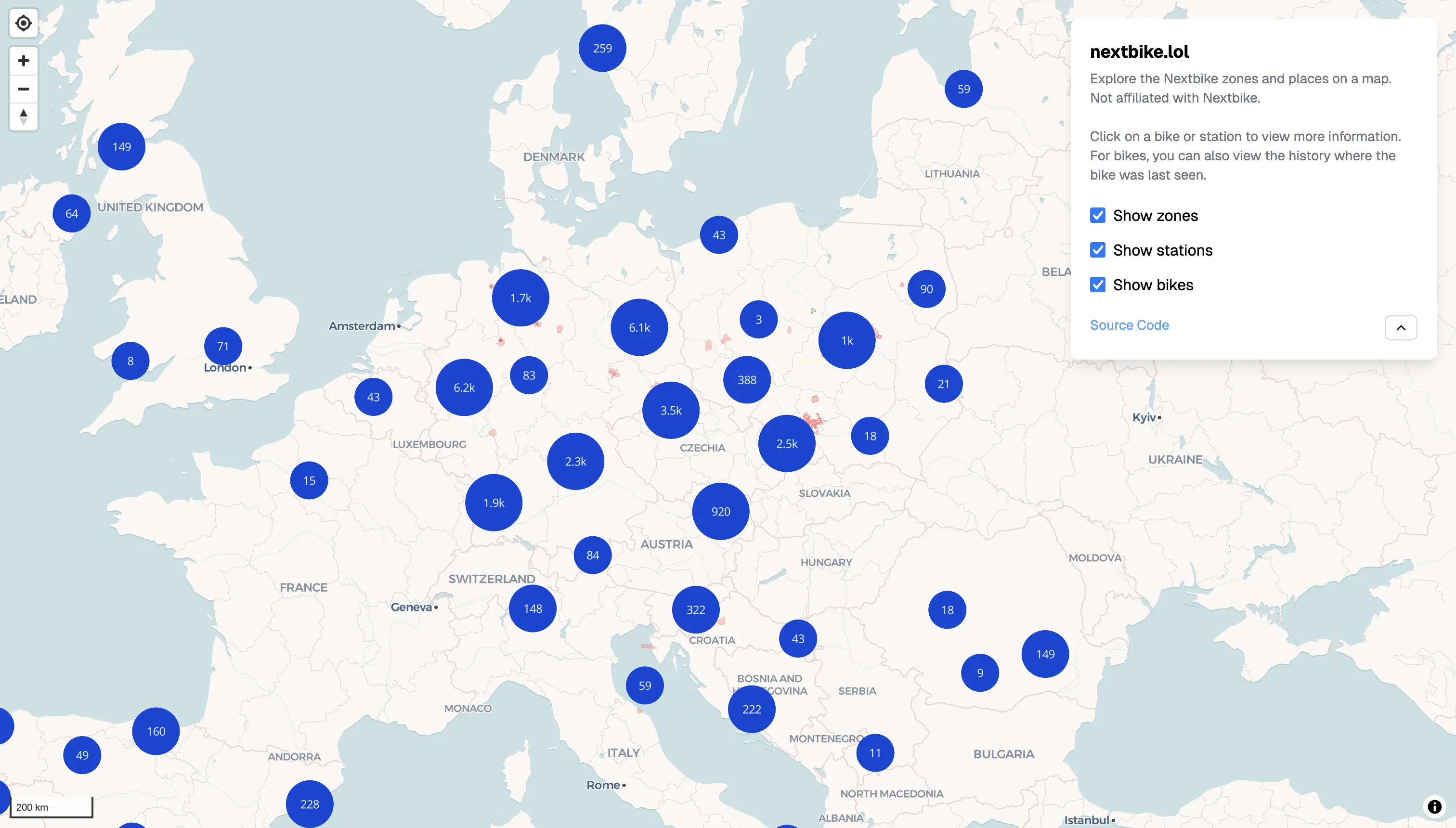
Nextbike is the biggest rental bike provider in Europe. It's available in hundreds of cities across the continent and is mostly used for short term rentals.
I've been using Nextbike quite often ever since I moved to Leipzig. It's a great way to get around the city if you don't have your own bike or don't want to risk getting your bike stolen at some sketchy place during the night.
Even without being logged into the app, you can scroll freely through the map and see where all the bikes are located. This made me curious about how the app works and if I could maybe scrape some of the data.
This turned out to be rabbit hole I didn't come out of for two days.
Reverse engineering the Nextbike app
I would say I have quite a bit of experience reverse engineering websites, but this was my first time reverse engineering a mobile app.
I have only used Bluestacks in the past, but after some googling I found that it's quite tricky to intercept networks requests from it. This is where I found that Android Studio has a built in emulator that is so much nicer to work with.
After downloading Android Studio and creating a Virtual Device I was able to install and launch the Nextbike app in the emulator. This was great but I still needed to find a way to intercept the network requests.
This is where HTTP Toolkit came into play. It's an amazing tool that allows you to connect to the Virtual Device, install a custom certificate and then intercept the network requests made by any app. You don't have to fiddle with any configuration, it just works!
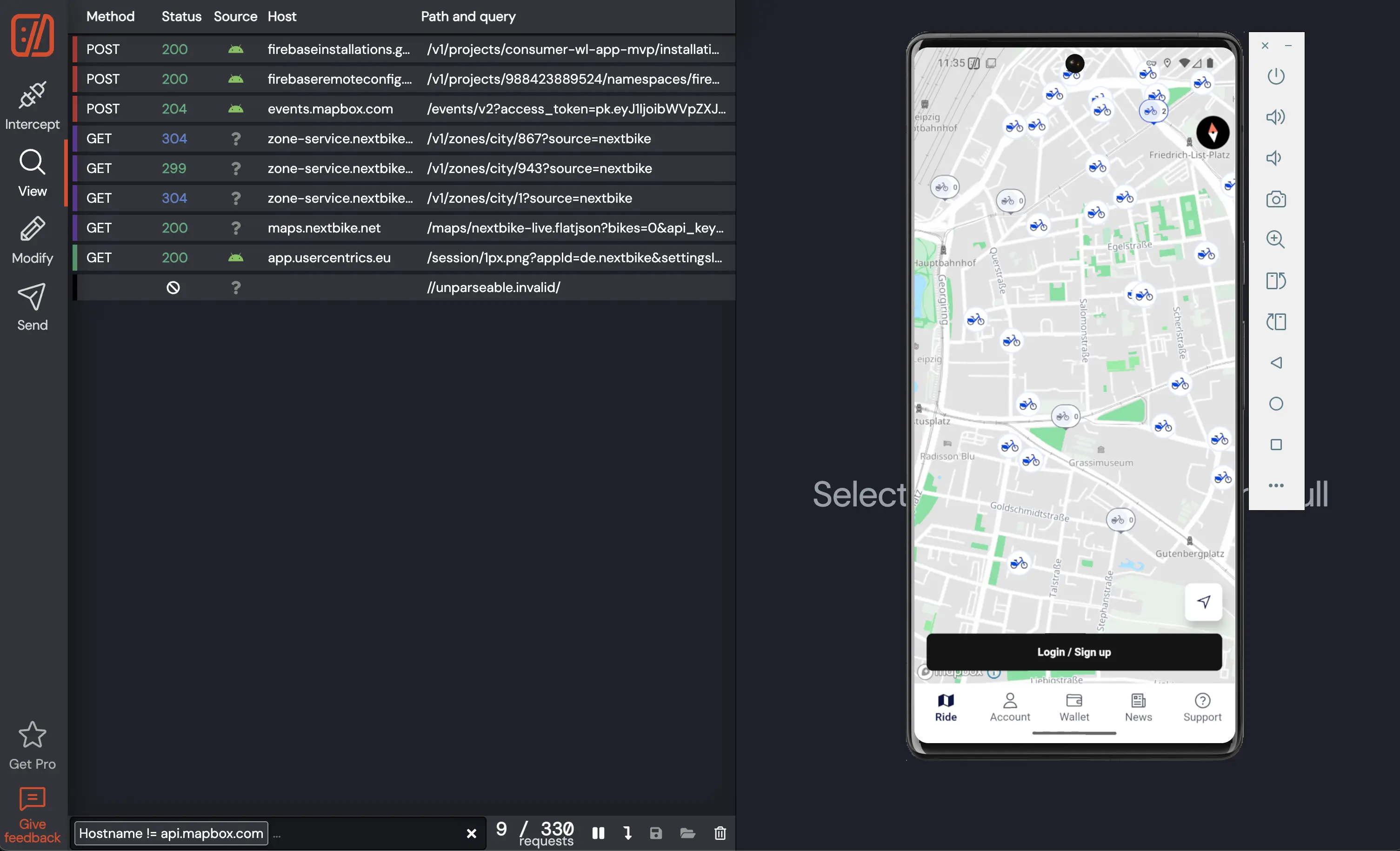 Android Studio Emulator with HTTP Toolkit connected
Android Studio Emulator with HTTP Toolkit connected
Once you have the emulator running with HTTP Toolkit connected you can start the Nextbike app. You will see that the app is making a lot of network requests when you scroll through the map. Most of these go to Mapbox API (api.mapbox.com) and just return static data for rendering the map.
What we are interested in are the requests to the Nextbike API. Once we have filtered out the Mapbox requests we can see that the app is only making a few other requests.
The most interesting request is argubly the one to maps.nextbike.net.
It loads the current location of all bikes, stations, and cities. It's important to note that this does only return the location of bikes that are currently parked.
Bikes that are currently in use are sadly (or luckily) not included in the response.
As you can probably see from the request below, we are passing a few parameters to the endpoint including an API key.
Turns out these are all optional and can be omitted, which makes it stupidly easy to scrape. 😵💫
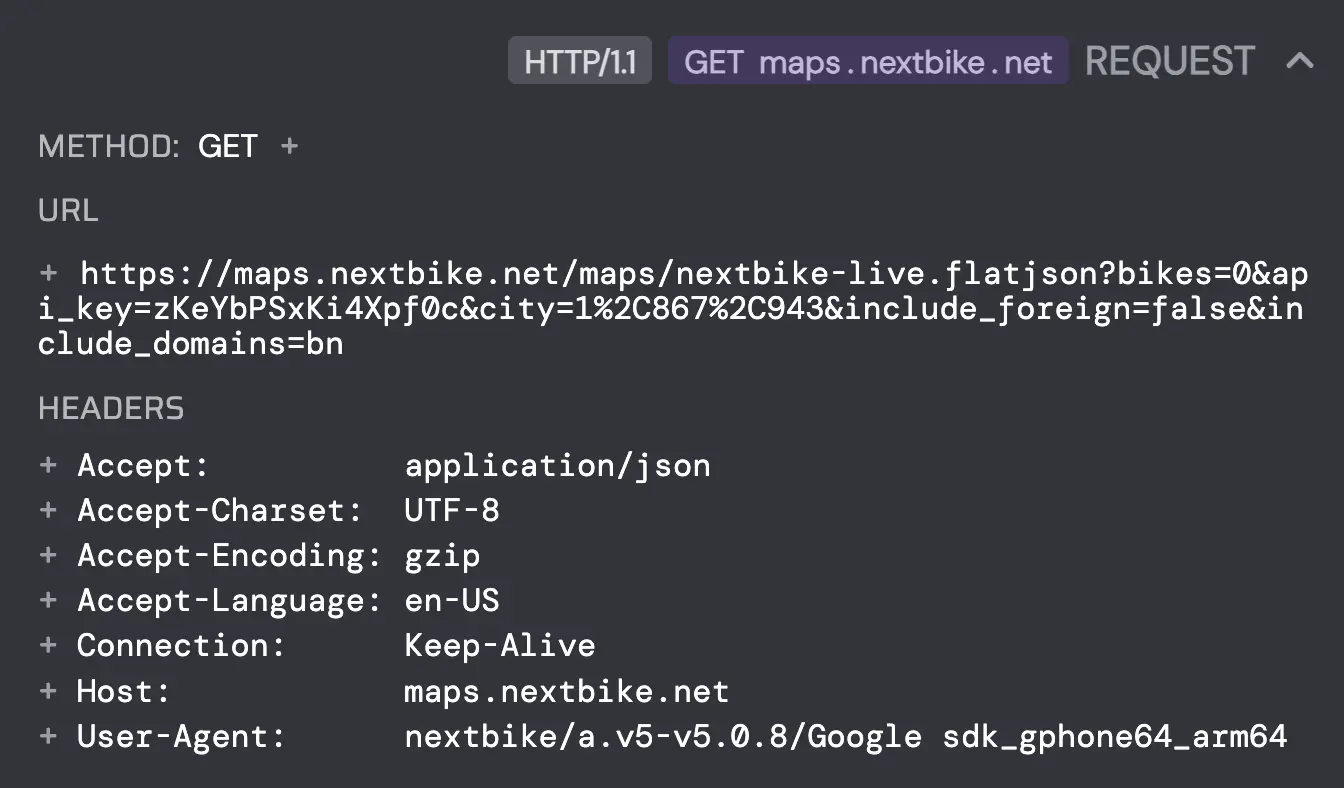 Request to the live map endpoint of the Nextbike API for the city of Leipzig
Request to the live map endpoint of the Nextbike API for the city of Leipzig
Another interesting request is the one to zone-service.nextbikecloud.net. It loads the zones for a given city where bikes can be parked. This endpoint also doesn't require any authentication which makes it equally easy to scrape.
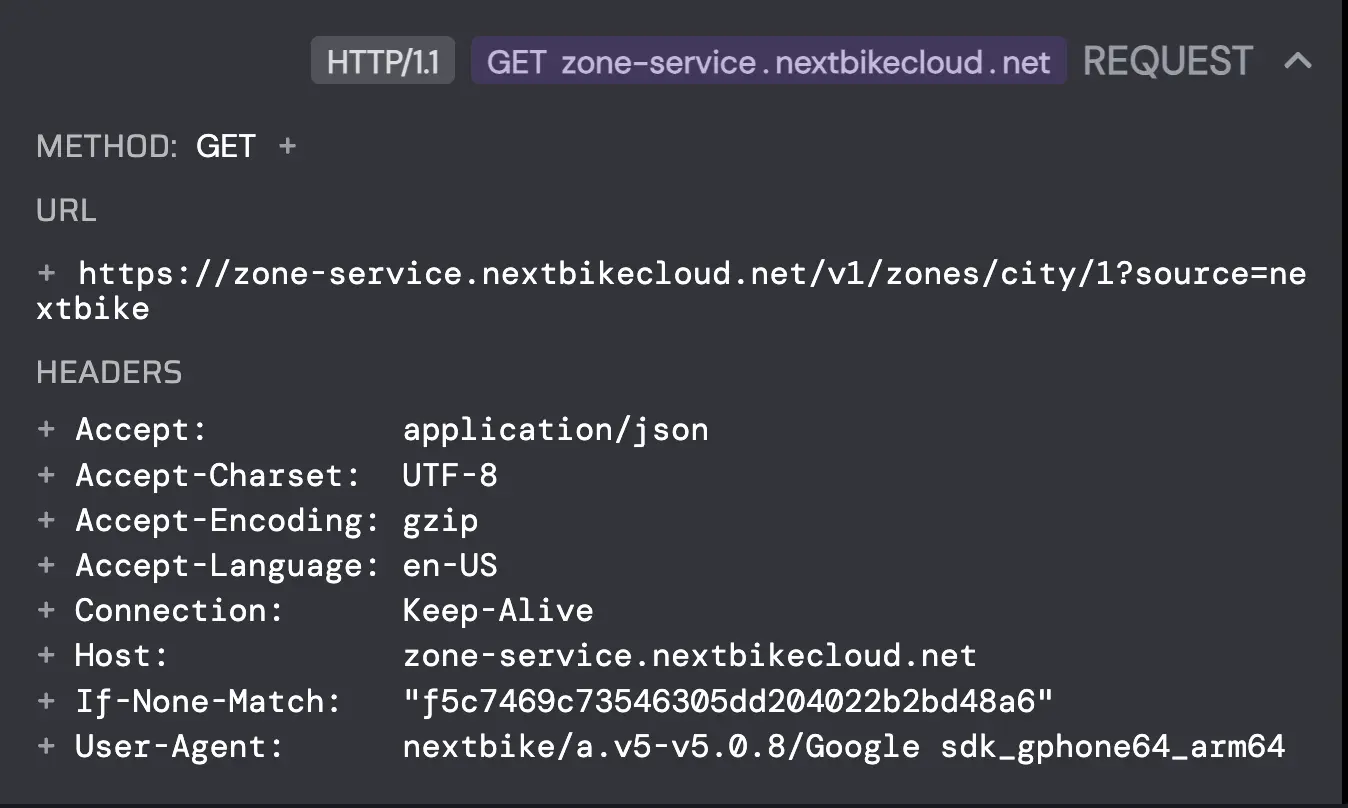 Request to the zones endpoint of the Nextbike API for the city of Leipzig
Request to the zones endpoint of the Nextbike API for the city of Leipzig
Collecting the data
By combining these two endpoints we can get a complete picture of all bikes, stations, cities, and zones and their current locations from the Nextbike API. If we want to track the bike movement it's not enough to just get the current location once, we need to poll the API at regular intervals and store the data in a database.
I have created a simple script that loads the data from the API and stores it in a database.
To keep the database size manageable it only stores the information about a bike when the location has changed.
To run the script periodically I have created a simple CRON job that runs it every 5 minutes.
This should be more than enough to get a good overview of the bike movement.
The script is only a hundred lines of code and can be found on GitHub.
Visualizing the data
I knew I wanted to build a website out of this, so people can explore the data easily.
The website is built with Next.js and Tailwind CSS. This is pretty overkill for just showing a map, but these are the tools I am most comfortable with.
The map is rendered using the React Map GL and the open source fork of Mapbox called MapLibre.
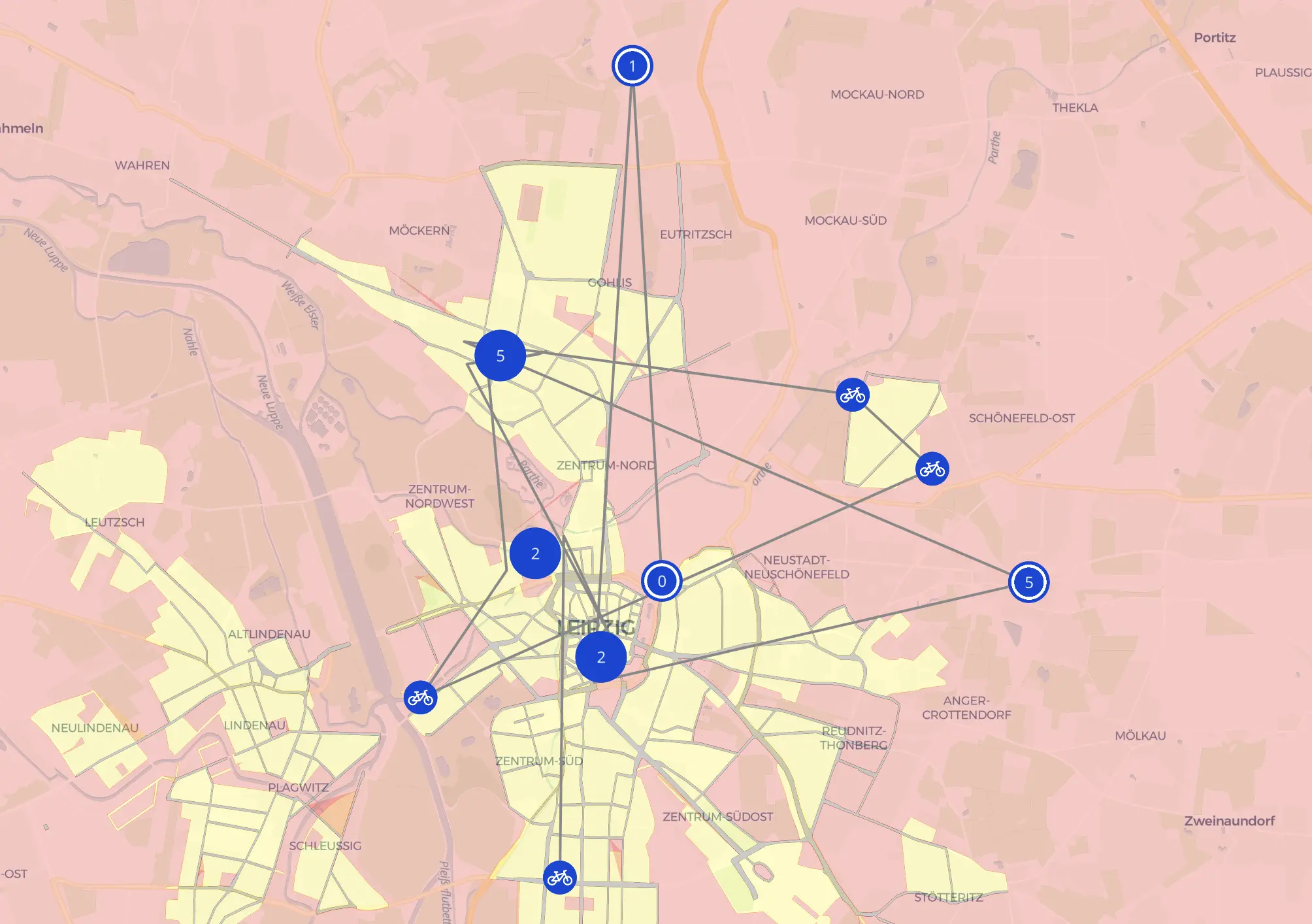 Location history of bike #23016 in Leipzig (nextbike.lol)
Location history of bike #23016 in Leipzig (nextbike.lol)
Future ideas
I think I only scratched the surface of what can be done with the data. Here are some ideas that I may or may not build in the future:
- Replay of bike movement
- Heatmap for bike parking
- "Highway" & "Hotspot" detection
- Nextbike revenue estimation
- Average trip length
- Activity by weekday and time
- Activity by weather or other external data sources
- Bike travel distance leaderboard
ChatGPT also suggested letting users "adopt" a bike and follow its daily adventures, like a Tamagotchi on wheels. So much for AI not being creative ...
What I Learned
This was a fun exploratory project and a good way to spend my weekend. I learned a lot about using Android Studio and HTTP Toolkit to reverse engineer mobile apps.
I was surprised how easy it was to scrape all these information from Nextbike without any authentication or other restrictions. I guess they just don't care about the data being accessible to anyone. Maybe it's also because they share this data with other bike rental apps?
Let's hope they don't change their API anytime soon, so I can do more fun stuff with this at a later point.
You can find the website at nextbike.lol and the code on GitHub.